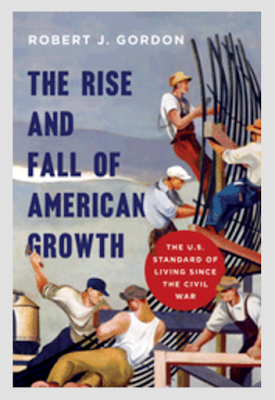Summary:
Robert J. Gordon ist Stanley G. Harris Professor of the Social Sciences at the Northwestern University.You are talking about the death of innovation. How do you measure innovation? What metrics are you using?Economists measure the impact of innovation by the growth in "total factor productivity," which is the growth rate of output minus a weighted average of labor and capital input.Central banks are seen to have great power. But the years since the financial crisis of 2008 has not been the success of expansionary monetary policies (standard and non-standard). Are growth and employment without fiscal stimulus possible in a depressed economy?The situation of the US and northern Europe shows that economic growth is possible without fiscal stimulus. The economic problems of Japan and southern Europe are unique to these countries and do not involve monetary or fiscal policy.What is your take on the recent attempts of central banks in Europe and Japan to boost the growth from negative interest rates?Because of fiscal austerity in Europe, the only policy tool available to central banks is to push interest rates to negative values. I think this will be quite ineffective.Thank you very much.Robert Gordon is a macroeconomist with a particular interest in unemployment, inflation and both long-run and cyclical aspects of labor productivity.
Topics:
Acemaxx-Analytics considers the following as important:
This could be interesting, too:
Robert J. Gordon ist Stanley G. Harris Professor of the Social Sciences at the Northwestern University.You are talking about the death of innovation. How do you measure innovation? What metrics are you using?Economists measure the impact of innovation by the growth in "total factor productivity," which is the growth rate of output minus a weighted average of labor and capital input.Central banks are seen to have great power. But the years since the financial crisis of 2008 has not been the success of expansionary monetary policies (standard and non-standard). Are growth and employment without fiscal stimulus possible in a depressed economy?The situation of the US and northern Europe shows that economic growth is possible without fiscal stimulus. The economic problems of Japan and southern Europe are unique to these countries and do not involve monetary or fiscal policy.What is your take on the recent attempts of central banks in Europe and Japan to boost the growth from negative interest rates?Because of fiscal austerity in Europe, the only policy tool available to central banks is to push interest rates to negative values. I think this will be quite ineffective.Thank you very much.Robert Gordon is a macroeconomist with a particular interest in unemployment, inflation and both long-run and cyclical aspects of labor productivity.
Topics:
Acemaxx-Analytics considers the following as important:
This could be interesting, too:
investrends.ch writes Schweizer Firmen ziehen wieder Investitionen aus dem Ausland ab
investrends.ch writes Swisscanto CIO Survey: «Bullish bei Gold, gespalten bei KI-Aktien»
investrends.ch writes Parlamentariergruppe legt Kompromiss zu UBS-Kapitalregeln vor
investrends.ch writes Inflation in Deutschland hält sich hartnäckig über Zwei-Prozent-Marke
Robert J. Gordon ist Stanley G. Harris Professor of the Social Sciences at the Northwestern University.
You are talking about the death of innovation. How do you measure innovation? What metrics are you using?
Economists measure the impact of innovation by the growth in "total factor productivity," which is the growth rate of output minus a weighted average of labor and capital input.
Central banks are seen to have great power. But the years since the financial crisis of 2008 has not been the success of expansionary monetary policies (standard and non-standard). Are growth and employment without fiscal stimulus possible in a depressed economy?
What is your take on the recent attempts of central banks in Europe and Japan to boost the growth from negative interest rates?
Thank you very much.
Robert Gordon is a macroeconomist with a particular interest in unemployment, inflation and both long-run and cyclical aspects of labor productivity. He is the author of a textbook in intermediate macroeconomics, now in its 12th edition.
His new book ist „The Rise and Fall of American Growth“, published by the Princeton University Press, 2016.

